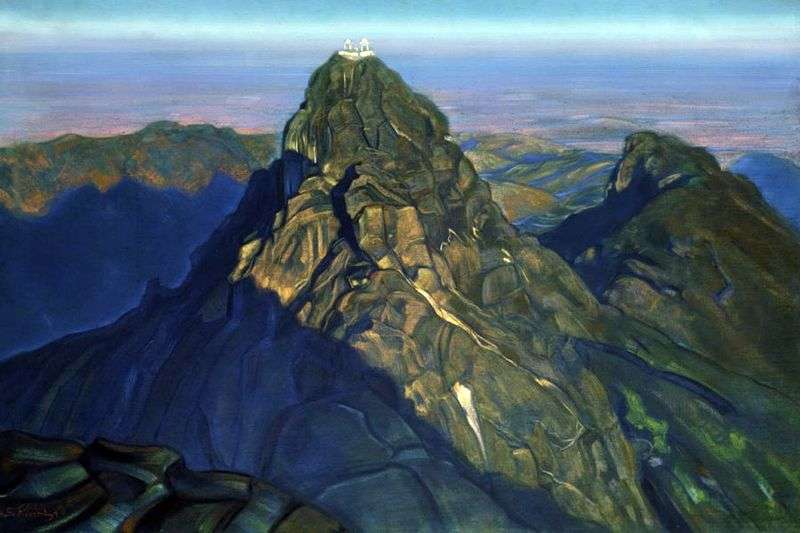
Creativity Svetoslav Roerich, permeated with the ideas of humanism, serves as a spiritual bridge for rapprochement between different peoples of the world and their mutual understanding. “To be one of the links between two arts, two cultures – in this I see my purpose – a citizen, artist, art historian, educator of youth.” The painting of Svetoslav Roerich was highly appreciated in India. Dr. S. Radhakrishnan wrote: “His landscapes are poems of color.”
At the opening of the exhibition at the Pushkin State Museum of Fine Arts in 1960, the Indian Ambassador to the USSR Mr. C. Menon said about the paintings of S. N. Roerich: “Having seen them many times, I began to appreciate the beauty of the landscape of my own before countries. Roerich caught as vividly as his famous father, the greatness of our Himalayas, the magic of our heavens and the peace of our lagoons. And he described them in a very Indian way. “
The sacred mountain that Svyatoslav Roerich depicts in his picture is Girnar. She is in Western India in Kathiawara. A lone peak rises above the other peaks, its steep slopes are immersed in the morning twilight. Deep dark blue shadows fill every hollow.
In contrast with the velvet darkness of the receding night, a rock with a snow-white ancient temple, exactly ascended to heaven by a miracle, is written against the background of a rosy sky. According to the stories of Svyatoslav Nikolaevich, there is a staircase with smooth wide steps, carved into the rock, sometimes outside, sometimes inside a stone mass. The length of the stairs reaches several kilometers.
This is one of the shrines of Western India, known since the time of King Ashoka. There still remains many Buddhist statues; pilgrims come there. According to one of the legends, the mark of one of the noble decrees of the emperor Ashoka is preserved on the rock famous all over the world in Girnar.
 Girnar – Nicholas Roerich
Girnar – Nicholas Roerich Girnar – Nicholas Roerich
Girnar – Nicholas Roerich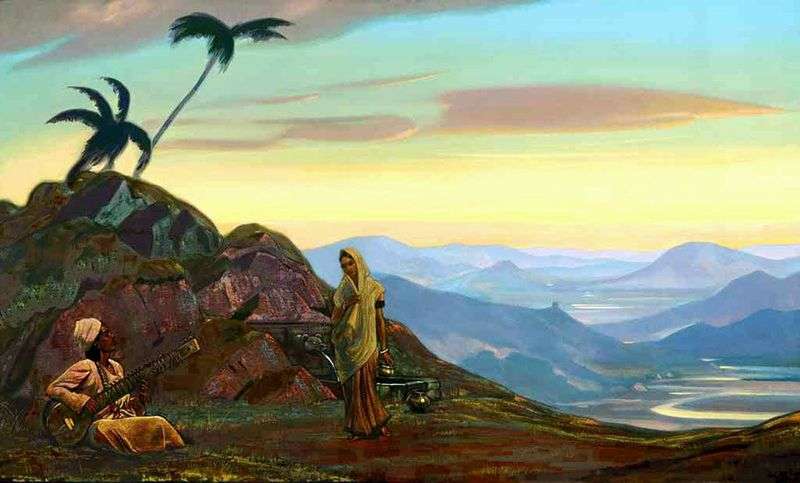 India by Svetoslav Roerich
India by Svetoslav Roerich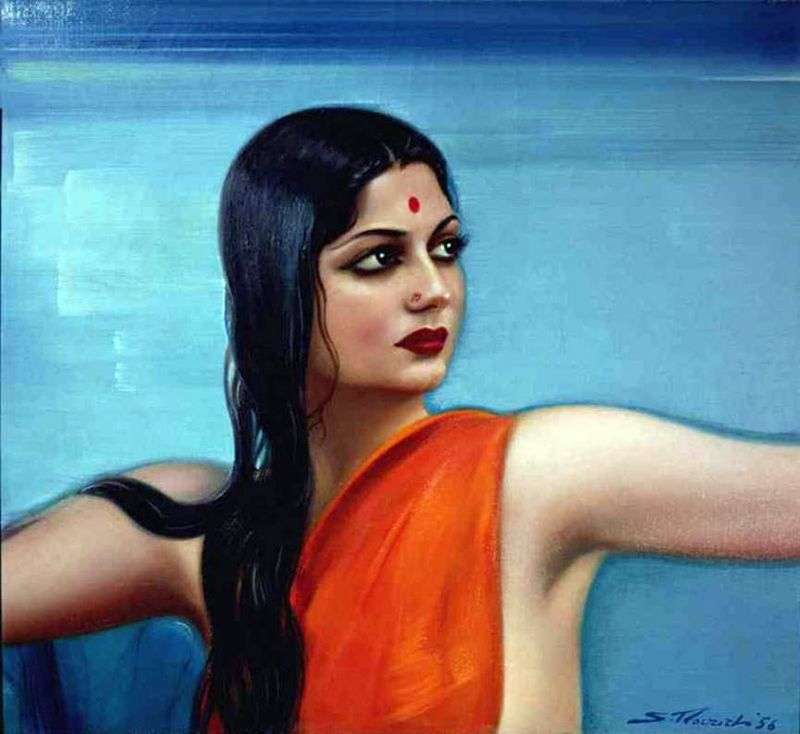 Roshan Wajifdar by Svyatoslav Roerich
Roshan Wajifdar by Svyatoslav Roerich Himalayas Everest by Nicholas Roerich
Himalayas Everest by Nicholas Roerich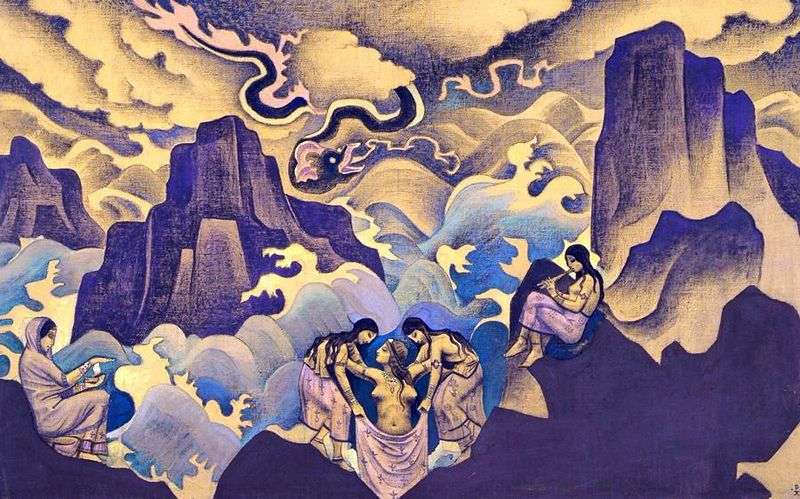 Ancient Serpent by Nicholas Roerich
Ancient Serpent by Nicholas Roerich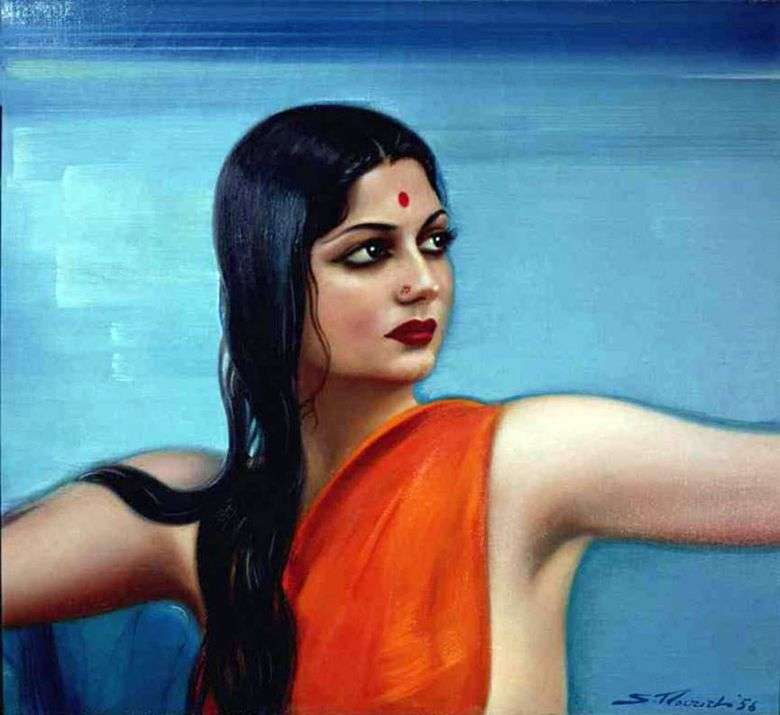 Roshan Wajifdar – Svyatoslav Roerich
Roshan Wajifdar – Svyatoslav Roerich Sarakha by The Blessed Arrow – Nicholas Roerich
Sarakha by The Blessed Arrow – Nicholas Roerich